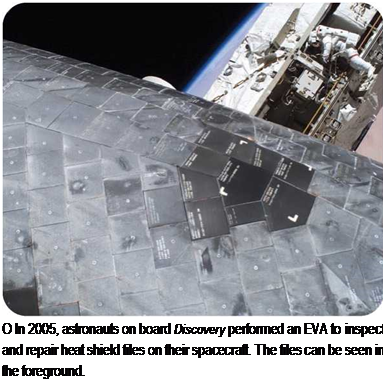Replacing the Space Shuttle
After a trouble-free start, the Space Shuttle program was severely affected by the losses of two spacecraft, Challenger and Columbia, which caused the deaths of fourteen astronauts. On January 28, 1986, Challenger blew up
 just seconds after takeoff from Kennedy Space Center and on February 1, 2003, Columbia was destroyed 16 minutes before it was due to land back on Earth at Kennedy Space Center. On its twenty-eighth mission (STS-107), Columbia disintegrated at a height of about 40 miles (64 kilometers).
just seconds after takeoff from Kennedy Space Center and on February 1, 2003, Columbia was destroyed 16 minutes before it was due to land back on Earth at Kennedy Space Center. On its twenty-eighth mission (STS-107), Columbia disintegrated at a height of about 40 miles (64 kilometers).
After both tragedies, NASA suspended planned Space Shuttle flights while experts investigated the causes of the accidents. On both occasions, after modifications to the remaining fleet, the Space Shuttles went back into space. After the 2003 disaster, flights resumed in July 2005, with the launch of Discovery on mission STS-114. This mission experienced a new scare, when onboard cameras showed a section of foam breaking off during launch (the problem that had caused the destruction of Columbia). During its orbital mission, when Discovery docked with the International Space Station, two astronauts made a spacewalk to check for damage-the first time astronauts had worked beneath the craft in space.
Although the Space Shuttles are flying again, the two accidents damaged NASA’s high reputation for “safety first” engineering. Critics of the Space Shuttle complain of the cost. At times, the program has consumed 30 percent of NASA’s budget, and overall it has cost more than $150 billion. Some people argue that the Space Shuttles were sim
ply overworked, launching all kinds of payloads, including commercial and military satellites. The size of payloads was reduced after the 1986 Challenger accident. Heavy-lift rockets, such as Delta IV and Ariane, now provide an alternative to the Space Shuttle for satellite launches but not for Space Station visits. The Shuttles are due to be retired in 2010 and replaced by NASA’s new Orion spacecraft.
SEE ALSO:
• Astronaut • Challenger and
Columbia • Future of Spaceflight
• NASA • Spaceflight
_____________________________________________ J










